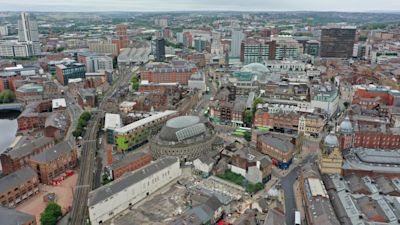What does it mean to be on the Covid-19 watchlist?

Leeds has now been added to Public Health England's 'areas of concern' and joins a list of places where further lockdown restrictions could be imposed if coronavirus infection rates continue to rise.
But what does it mean to be on the list?
More than six million people in England currently live in areas covered by the government's watch list.
These places are categorised as either "areas of concern", "areas of enhanced support" or "areas of intervention".
Measures range from increased testing to stricter lockdowns.
Areas of intervention
Parts of West Yorkshire continue to be categorised as requiring intervention. This means that people are not allowed to meet those from other households indoors or in private gardens. Other measures that could be imposed are:
Limiting the number of people allowed to meet from different households
Restricting physical contact, such as hugs and handshakes
Expanding use of face coverings to all enclosed public spaces
Increasing social distancing to two metres
Areas of enhanced support
In these areas, efforts to keep on top of outbreaks are stepped up. This means they are given the ability to test people with or without symptoms, extra testing kits and help analysing data by national experts.
Areas of concern
Areas of concern, like Leeds, are those at the lowest end of PHE's watchlist, but extra precautions are likely because they display some of the highest rates of new infection in the country.
In these cases the local council will take action. For example they might do more testing in care homes or work with communities they have identified as higher risk.
Under their existing Covid-19 powers, councils could close down a venue, such as a pub, but would not be able to order them all to close.